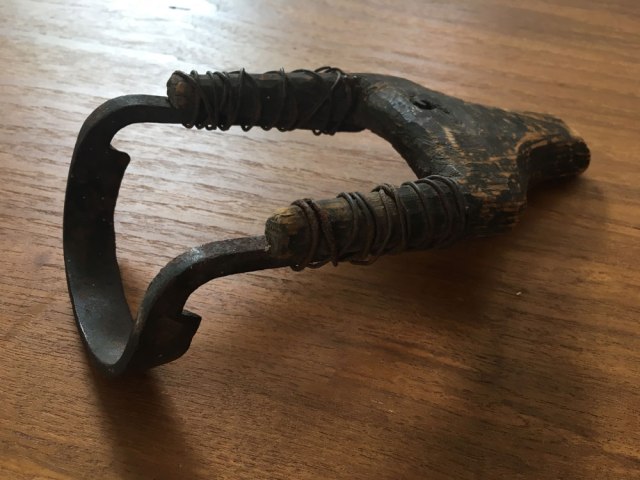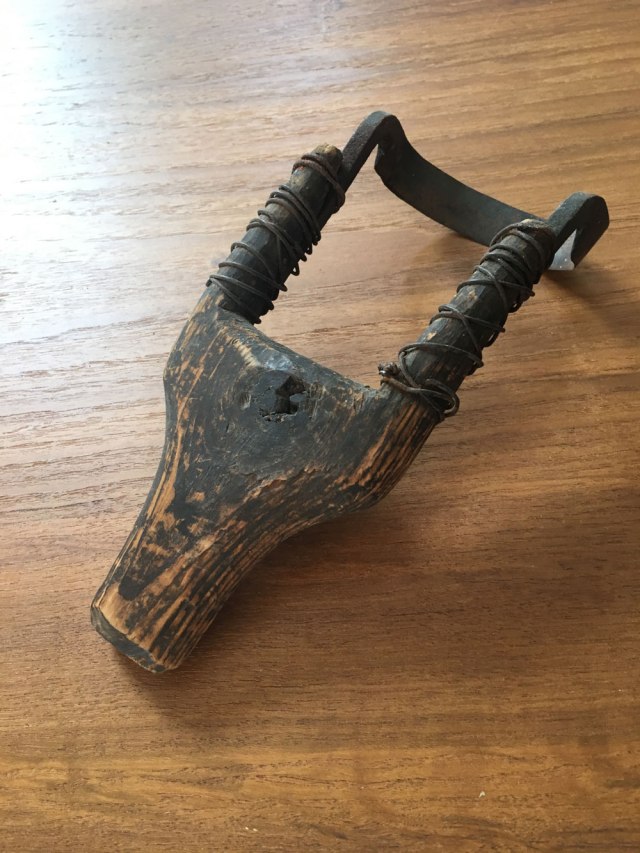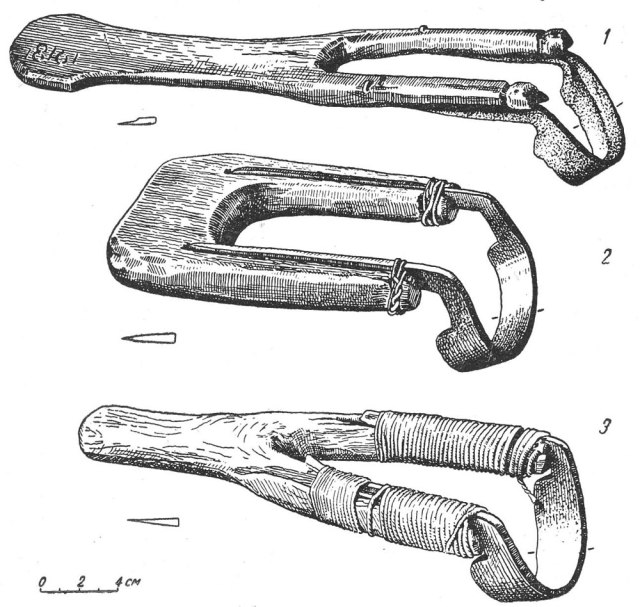
Mike Mascelli, upholsterer extraordinaire, dropped by the Lost Art Press storefront today. He had just finished shooting a couple DVDs with F+W Media and was on his way to teach at the Marc Adams School of Woodworking.
He also had a small treasure to show me.
An Estonian friend of his, Indrek Lepson, had given him an Estonian draw knife (what we might call a draw shave or scorp) and it was like looking at an illustration right out of our forthcoming book “Woodworking in Estonia.”
Like the shaves shown in the book, this one was made from a forked branch and the blade was secured in exactly the same manner as shown in the illustration. Here is Mr. Lepson’s description:

“Scorp made from an Estonian woodworker from the island of Saremaa.
“I visited the island about 25 years ago, and his 90+ year old widow, who still lived on the farm, showed me his workshop, with his hand made tools and an amazing workbench.
“The island has its own history, and style, of woodcraft, and that was a veritable museum of old craftsmanship, pertaining to a specific region of Estonia.
“Her husband was among the thousands on Saaremaa, killed, or deported to Siberia, by the Russians in the early years of the Russian occupation, when over 200,000 men, women and children were crammed into cattle cars, shipped off to Siberia, and their properties confiscated. With the collapse of the Soviet Union, properties were returned to the survivors of the purges. It’s more complicated than that, but family properties were eventually returned to their original owners, if they survived the purges, or to their kin.”

Here is a small part of Ants Viires’s description of the tool from the book:
“The Estonian draw knife finds may be divided into three different groups, mainly due to the nature of the handle. The most widespread is the fork handle type (Fig. 25), which makes it possible to work with one hand. It is rare only in the easternmost parts of the country, or it does not exist there at all (see Fig. 27). The two-pronged fork handle has usually been carved from wood, but a natural fork is relatively seldom used. Such a handle can be either short or wide (Fig. 25.2) so that it is necessary to stick the fingers between its prongs, or with a shorter or longer “tail,“ by which the worker can hold it in place (Fig. 25.1, 3). Such a handle with a “tail“ measures seldom more than about 7-3/4″ (20 cm); Pakri Swedes have produced some pieces that are nearly half a meter long. (ERM A 489:189). The shaft of the blade is attached to the handle either below or above it. With that type the blade is fastened to the lower side of the handle (usual on the islands and in northwest Estonia) or on the upper side (the dominating method on the mainland) where a respective slot has been made there. The ends of the shaft are bent and knocked into the wood. Often the shafts are attached with tight rings, sometimes made of string, all along the handle (Fig. 25.3). The curve in such draw knives usually ranges around 4″ (10 cm).”
The work this tool does is far-ranging – basically anything that deals with hollow work (which includes a lot of different items in Estonia).
It was a small thrill to see this tool in person – still sharp and ready to go after decades of not being used.
I think you’ll find many small treasures like this in “Woodworking in Estonia” when it arrives in early August.
— Christopher Schwarz